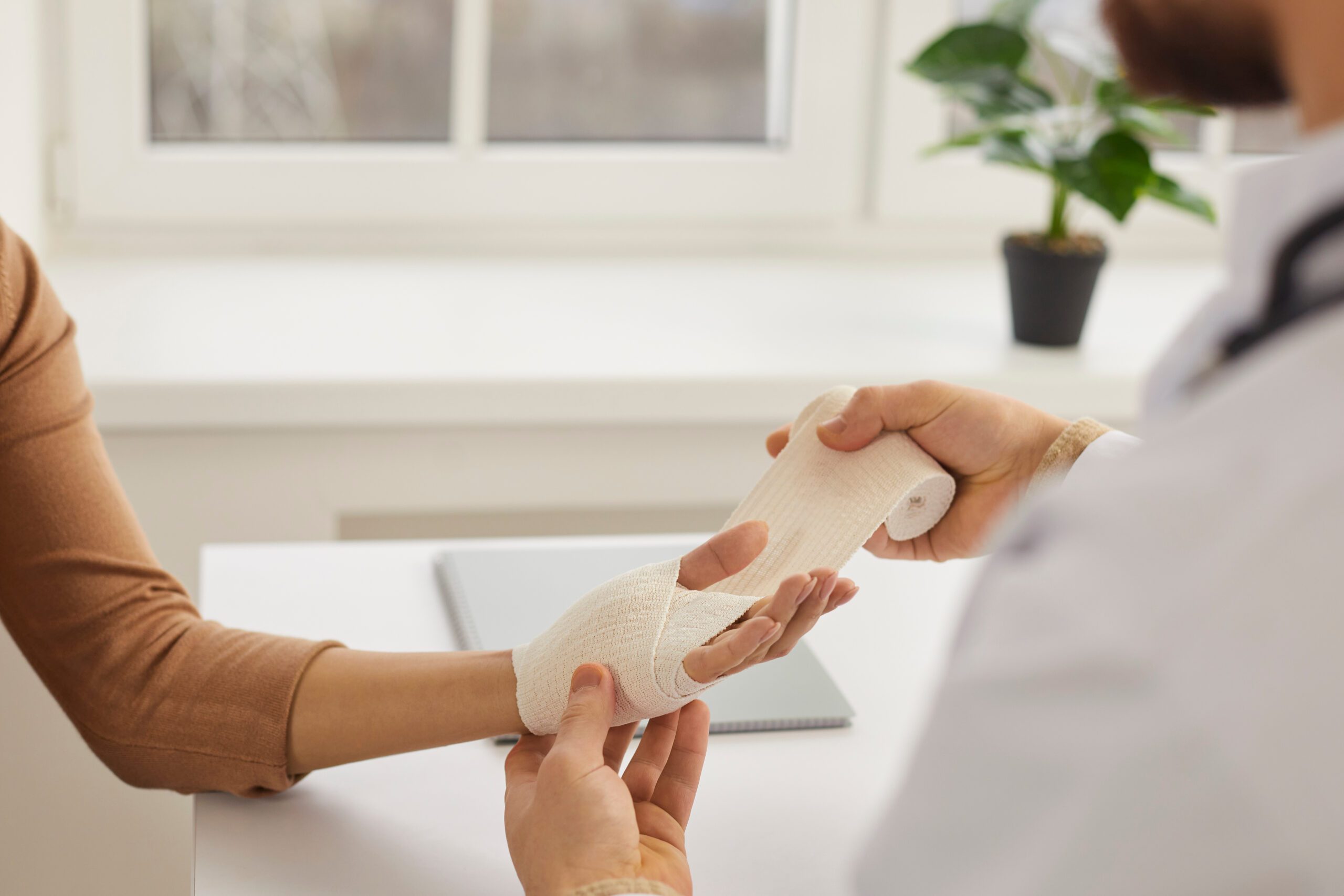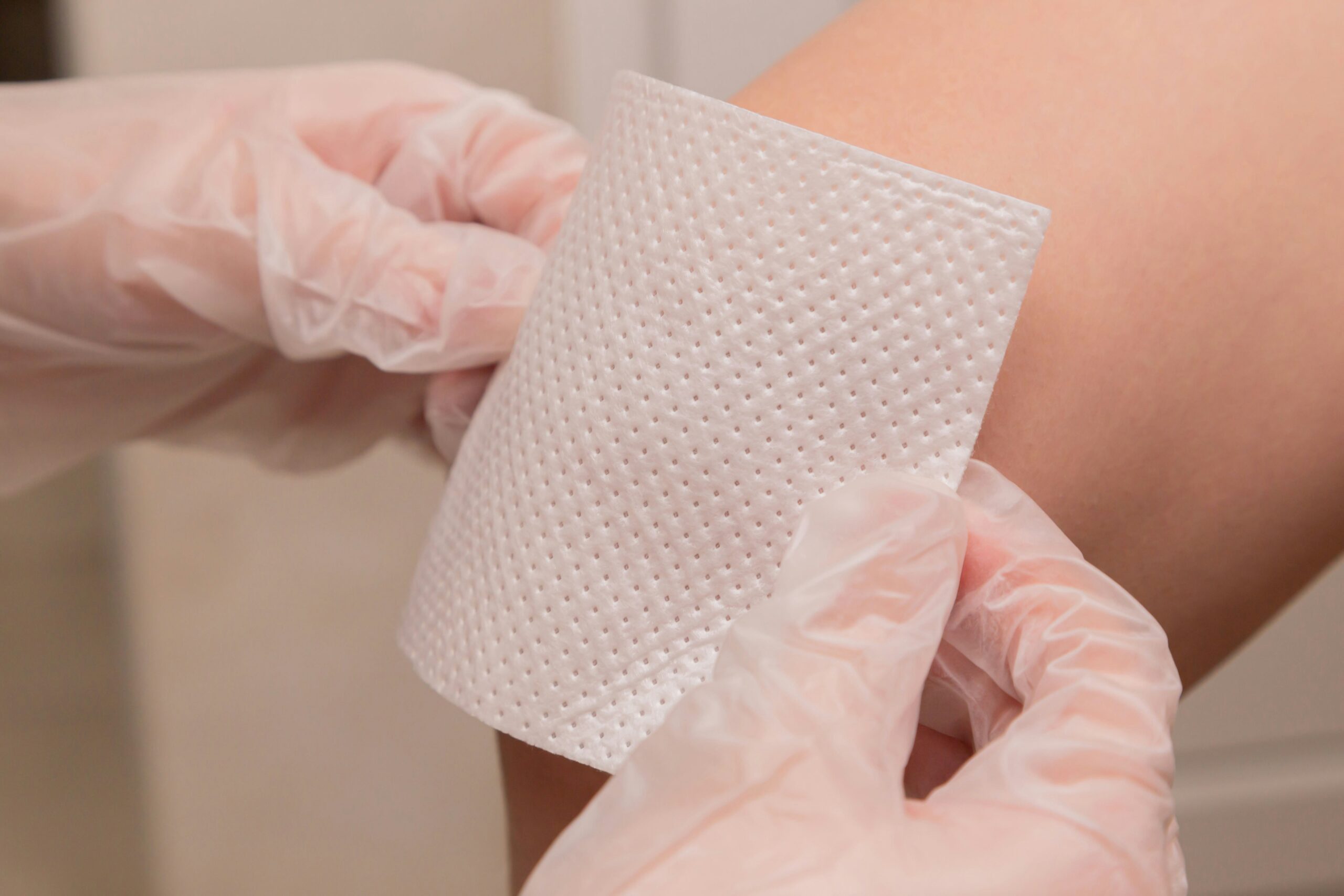Minor Burns
Minor Burns
Learn more about minor burn treatments and how they can help your healing process at Innovative Wound Care Specialists.
Burns can be classified by the degree of severity and by amount of affected area. Minor burns for children take up less than 10% of their body, and minor burns in adults take up less than 15%. If a burn takes up more area based on age, it is considered a major burn and hospitalization and rehabilitation will likely be needed.
Minor burns will be painful and red, and you may experience some swelling. Your skin usually stays intact with a minor burn and you may have some small blisters appear around the burned area.
As a quick guide, if a burn is larger than your hand with your fingers together, seek out a medical professional for treatment.
Start Treatment Today
You may be familiar with burns being classified into first, second, and third degree categories. These categories focus on the depth of the burn and how many layers of skin are affected.
When deciding if a burn is minor or major, you should focus only on the size of the burn. Minor burns are small in size and are not larger than your hand. Any degree burn larger than your hand is considered a major burn.
First Degree Burns
First-degree burns only involve the first layer of skin and commonly come from touching a hot stove, curling iron, or hair straightener. These burns can typically be treated at home with aloe products, over-the-counter pain medications, and loose bandages.
Second Degree Burns
Second-degree burns go through the first layer of skin and partially into the second layer. Depending on the size of a second degree burn, it can be treated as a minor or major burn. If you have a second degree burn that is larger than 2-3 inches, it should be treated as a major burn.
Third Degree Burns
Third-degree burns damage both layers of skin fully and begin to affect the muscle, bones, and tendons underneath the affected area. Although third-degree burns are the most severe level of burn you can have, they can still be labeled as minor or major based on size. Third-degree burns should always be evaluated and treated by a professional immediately, regardless of size.
With minor burns, the damage does not extend past layers of skin into muscle tissue, bones, or tendons. Minor burns are also relatively small in size, and can usually be treated at home.
Major burns are larger in size and destroy both layers of skin, and can cause damage to muscle, tendons, and bones depending on the location and depth of the burn. Once a burn extends past both layers of skin, it must be treated by a healthcare professional to give you the best chances of recovery.
For some burns, you may have to have the area cleaned to remove dead tissue, reduce the chances of scarring, prevent infection, manage pain, and ensure regained function before you can treat your burn at home. At Innovative Wound Care Specialists, we handle minor burn debridement to help you on your burn recovery journey.
Minor Burn Appearance
Minor, first-degree burns usually still have the skin intact, but will appear red. A common minor first-degree burn is a sunburn, which typically is hot to the touch and painful. In some cases, small blisters can be seen around or in the burned area.
Minor, second-degree burns appear very red, with a fair amount of swelling and blistering around the area. These burns are extremely painful, and are highly sensitive to the touch. If you have a second degree burn that is near your feet, face, eyes, ears, groin, or any major joint, it will need to be evaluated by a doctor to determine if the burn is minor or major.
Minor Burn Symptoms
If you notice any of these symptoms, you may have a minor burn:
- Blisters
- Pain
- Swelling
- Peeling skin
If you notice that your skin looks white or charred, seek out medical attention immediately.
Symptoms like pain from minor burns can take several days to pass as the burn heals. It is important to pay attention to worsening symptoms such as infection, redness past the burned area, changes to the burn’s appearance, and Tylenol-resistance fever.
To reduce pain from minor burns, you can take over-the-counter pain relievers such as ibuprofen or acetaminophen. As your burn heals, it may begin to itch, which can be alleviated by lotion or aloe. If you have any wound dressings, make sure they are changed regularly and your burn is kept clean to avoid discomfort.


To relieve burn pain, you will want to apply soothing lotions that use aloe to moisturize and soothe the burn. Do not use ointments, butter, or other home remedies on a burn, because they might retain the heat coming off of your burn and make the burn worse.
Medications like ibuprofen and acetaminophen can also help reduce pain and discomfort around a burn. If your burn starts to itch, you can take Benadryl according to the label instructions to help reduce itchiness.
To treat a burn at home, make sure you know the do’s and don’ts of burn care.
Do:
Run the burn under cool (not cold) water for at least five minutes(stop if you begin to shiver)
Remove any clothing or accessories that are around the burn
Apply soothing agents like aloe to the area
Cover the burn loosely with bandage to protect the area without adding extra pressure
Take pain medicine like ibuprofen to relieve pain
Stay hydrated by drinking beverages with electrolytes
Don’t:
Do not break blisters
Do not use ice (might cause further damage by rapidly changing the temperature of the area)
Do not use ointments or home remedies
Do not attempt to remove anything stuck to the burned area(go to an emergency room or clinic for assistance)

You should seek medical attention for a burn when the burn extends past both the epidermis layer and dermis layer of your skin. Look out for these key symptoms as signs to seek medical attention:
- Skin appears charred, blackened, or white
- Dry or leathery skin texture
- Lack of sensation in the area(nerve endings being destroyed)
- Burn is larger than the palm of your hand.
Patient and wound assessments are essential components of the wound care process, playing a crucial role in understanding the patient’s overall health, identifying factors that may impact wound healing, and tailoring an effective treatment plan.
Assessing the patient’s overall health, medical history, and lifestyle factors helps healthcare professionals at IWC understand potential underlying conditions that may affect wound healing. Factors that may affect wound healing include diabetes, vascular disease, nutritional status, and immune function.
At Innovative Wound Care Specialists, we provide a comprehensive range of advanced treatments to promote effective wound healing and enhance overall well-being. From Compression Dressings to Hyperbaric Oxygen Therapy (HBOT), our services address various wound types and underlying conditions.
Our goal is to deliver advanced treatments and compassionate care for every patient’s unique needs to promote long term healing and prevent recurrence with the help from our professional wound specialists.
Chronic wounds can cause patients to suffer and affect mobility. While most wounds heal quickly, minor burns may not heal or fail to improve for weeks and can cause severe problems if left untreated.
Wound Care May Include . . .
Compression Dressings & Advanced Wound Dressings – We offer a variety of innovative wound dressings, including those with antimicrobial properties, moisture control, and pressure relief features.
Laboratory and Vascular Evaluation – Monitor patient’s peripheral artery disease (PAD) and its effect on supplying blood to wounded tissues.
Cellular or Tissue-Based Products – Utilizing bioengineered skin grafts and substitutes to promote faster healing and tissue regeneration.
Wound Measurement and Photographs – To monitor wound progression and wound healing.
Hyperbaric Oxygen Therapy (HBOT) – Enhancing oxygen supply to the affected area to accelerate wound healing and combat infection.
Surgical Procedures and Support – Assisting in wound closure, infection control, tissue removal or repair, promotion of granulation tissue, reducing tension on wounds, enhancing blood supply, and management of complications.
Negative Pressure Wound Therapy (NPWT) – Using controlled suction to remove exudate, reduce edema, and improve blood flow to the wound.
Prosthetic and Pressure Relief Assistance – To reduce pressure on the ulcer, we provide specialized footwear and custom orthotics, designed to redistribute weight and minimize friction.
Debridement – Removal of dead, damaged, or infected tissue by surgical or other means to improve the healing potential of the remaining healthy tissue.
At Innovative Wound Care Specialists, we have multiple treatment options for minor burns, including:
- Debridement: removing non-viable or damaged tissue from a wound
- Cellular and/or Tissue-Based Products: promotes healing and facilitates damaged tissue repair
- Patient and Wound Assessment: identifies factors that may impact wound healing and tailors an effective treatment plan
- Negative Pressure Wound Therapy: uses negative pressure to manage and heal wounds
- Wound Measurement and Photographs: provides a history for a wound to show any healing progress
- Surgical Procedures and Support: addresses various conditions that affect wound healing
- Advanced Wound Dressings: designed to cover and protect wounds to create optimal healing and reduce infection risk
Visit us today at Innovative Wound Care Specialists for one of our professional wound specialists to evaluate your burn and develop a treatment plan. We want to jumpstart your healing journey.
